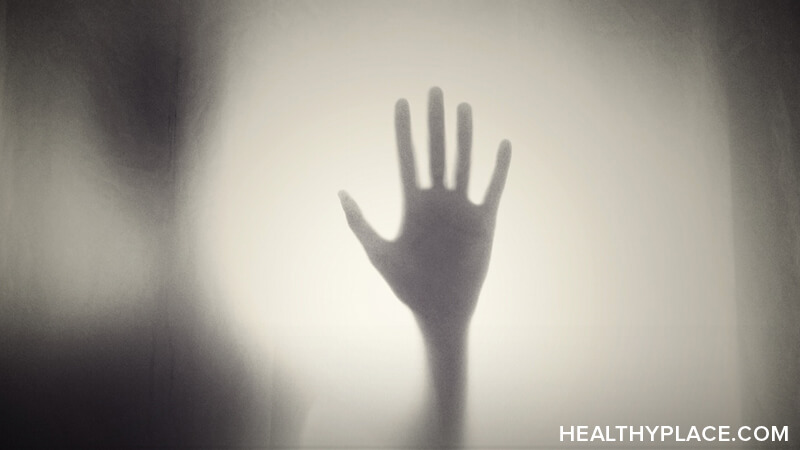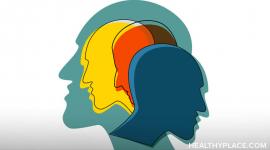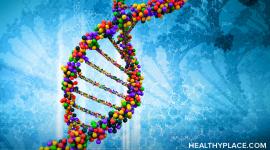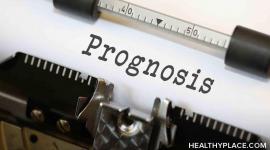What Are the Symptoms of Schizoaffective Disorder?

Symptoms of schizoaffective disorder fit into multiple categories. This illness is a single mental disorder that has features of psychotic disorders and mood disorders. It can be hard to understand and even harder to live with. Multiple types of symptoms team up and present quite a challenge for those living with schizoaffective disorder.
In the DSM-5, symptoms of schizoaffective disorder are stated as the primary category (Criterion A) of symptoms of schizophrenia as well as symptoms of a major mood episode. This description can be a bit vague, though, when you’re trying to figure out just what you or a loved one is experiencing. Here’s an in-depth look at the symptoms of schizoaffective disorder.
General Schizoaffective Disorder Signs and Symptoms
Schizoaffective disorder includes these categories of symptoms and signs:
- Psychotic
- Manic
- Depressive mood and other symptoms of depression
- Cognitive
The way someone experiences each of these is highly individualized because within these general categories, there are numerous symptoms.
How the symptoms behave is as important as the symptoms themselves.
- The symptoms of a mood disorder and symptoms of a psychotic disorder can occur together or separately
- Symptoms tend to occur in cycles
- Symptom severity is important and will be used to guide treatment
- Delusions or hallucinations must occur for at least two consecutive weeks without a mood disorder (this disorder is at its essence a psychotic disorder)
- Other than the required minimum two-week absence, mood symptoms must be present the majority of the time during the course of the illness
Psychotic Symptoms of Schizoaffective Disorder
Schizoaffective disorder includes the first set of requirements for schizophrenia
- Delusions (false beliefs)
- Hallucinations (sensing things that aren’t there; especially auditory in the form of voices)
- Disorganized thinking (evident in talking with someone and having difficulty following the erratic flow of ideas)
- Grossly disorganized or abnormal motor behavior (problems with goal-directed behavior, acting unpredictably, catatonia in which some doesn’t react to the world)
- Negative symptoms (things taken away from the person, like speech or emotional expression)
Except for those symptoms that mimic depression, negative symptoms aren’t as common in schizoaffective disorder as they are in schizophrenia.
Like schizophrenia, schizoaffective disorder involves cognitive symptoms; however, cognitive symptoms in schizoaffective disorder aren’t as pronounced as they are in schizophrenia. Cognitive symptoms include experiences such as memory problems, difficulty with abstract thinking, problems with advanced planning, and attention deficits.
Someone with schizoaffective disorder can have any of the above psychotic signs and symptoms, with delusions and auditory hallucinations among the most common. This is only part of what the symptoms of schizoaffective disorder are, though. Mood symptoms are prominent, too.
Symptoms of Schizoaffective Disorder Bipolar Type
The bipolar type of schizoaffective disorder involves mania. To be diagnosed with this type, someone must have experienced a manic episode. Depressive episodes may occur but aren’t necessary for a diagnosis of schizoaffective disorder bipolar type.
Mania refers to a noticeably elevated, expansive, or irritable mood. During a period of mania, someone channels much energy into goal-directed behavior.
Whatever she has made her goal, she will hyperfocus on it to the detriment of other areas of her life, including other goals and relationships.
Other signs and symptoms of mania that can be part of schizoaffective disorder include:
- Inflated self-esteem
- Reduced need for sleep
- Pressure to talk
- Racing thoughts or flight of ideas (jumping from one thought to the next)
- Distractibility
- Psychomotor agitation that appears like a sense of purposelessness
- Risky behavior (excessive spending, sexual promiscuity, substance abuse, etc.)
To be diagnosed as having the bipolar type of schizoaffective disorder, someone must have at least three of the above signs and symptoms.
Someone with the bipolar type might also experience symptoms of depression at times, or he might not develop them at all. When someone only experiences depressive symptoms with the psychotic symptoms, he instead has schizoaffective disorder depressive type.
Symptoms of Schizoaffective Disorder Depressive Type
The primary mood symptom in the depressive type is depressed mood. Living with a depressed mood most of every day, feeling sad, hopeless, and empty, is what sets this type of schizoaffective disorder apart from schizophrenia.
Other signs and symptoms that are part of the depressive type of schizoaffective disorder are
- Decreased interest in activities
- Loss of a sense of pleasure (anhedonia)
- Unintentional weight gain or loss
- Frequent headaches
- Chest pains
- Fatigue, exhaustion
- Physical aches and pains
- Digestive problems
- Back pain
- Sexual dysfunction
- Agitation
- Slowing down of movement
- Feelings of worthlessness or excessive guilt
- Difficulty thinking, concentrating and making decisions
- Persistent thoughts of death, suicidal ideation
Use the above lists as a schizoaffective disorder symptom checklist to keep track of your psychotic and mood signs and symptoms and to make it easier to talk with your doctor.
APA Reference
Peterson, T.
(2021, December 29). What Are the Symptoms of Schizoaffective Disorder?, HealthyPlace. Retrieved
on 2025, December 1 from https://www.healthyplace.com/thought-disorders/schizoaffective-disorder-information/what-are-the-symptoms-of-schizoaffective-disorder



